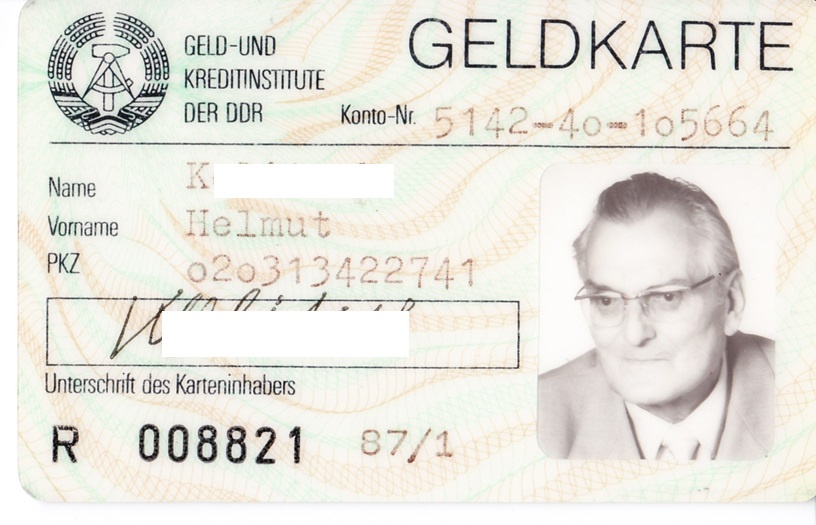Auch in der DDR gab es Geldkarten. Sie wurden Mitte der 1980er Jahre eingeführt. Jeder Inhaber eines Girokontos konnte eine Geldkarte erhalten. Der Geldautomat gab allerdings nur 20- und 50-Mark-Scheine aus. Im Unterschied zur heutigen EC-Karte wurde nicht auf der Karte, sondern schon auf dem Antrag unterschrieben. Die Unterschrift wurde praktisch ein eingedruckter Bestandteil der Karte. So konnte die Unterschrift nicht verwischen und war fälschungssicher. Auf dem Antrag wurde ebenfalls ein Passbild aufgeklebt.
Ebenfalls beim Antrag musste der Persönliche Bank Code (Abk. PBC, heute die sog. PIN) gewählt werden, eine vierstellige Zahl, die frei gewählt werden konnte.
Das Netz der Geldautomaten war in der DDR allerdings nicht sehr dicht. Nur insgesamt 274 Automaten sind bis 1989/90 installiert worden. Sie befanden sich in den großen Städten, wie die vorliegende Karte für Dresden.
en

